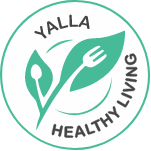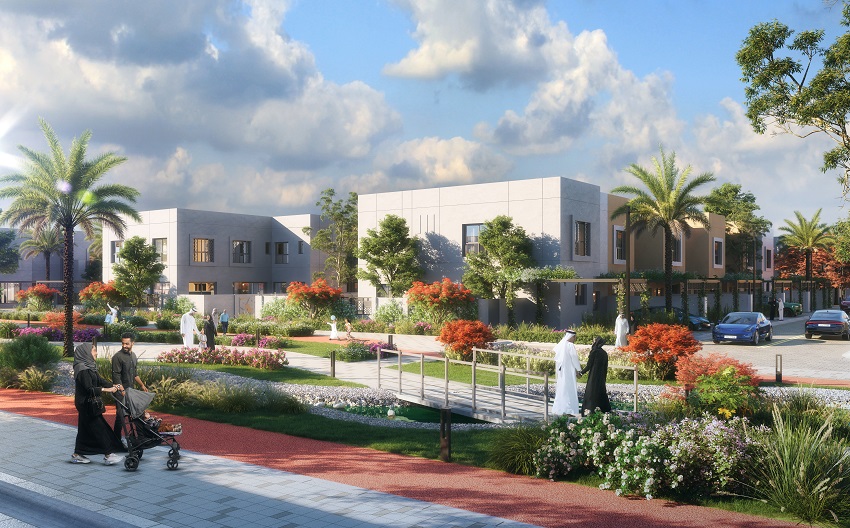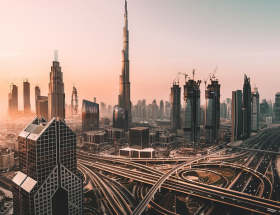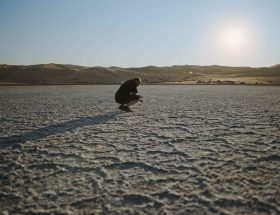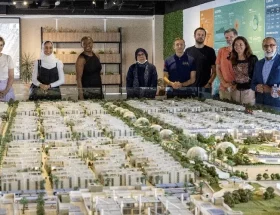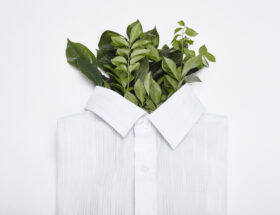To commemorate World Sustainability Day, Diamond Developers reveal the crucial elements that make sustainable cities in the region
Sustainable cities: On the occasion of World Sustainability Day, now is the time to reflect on whether or not you should be considering a move to a sustainable city. But, what exactly makes a city ‘sustainable’, and why do these projects matter?
By 2050 the world’s population is expected to reach 9.8 billion, and nearly 70% of this booming population is projected to live in urban areas.
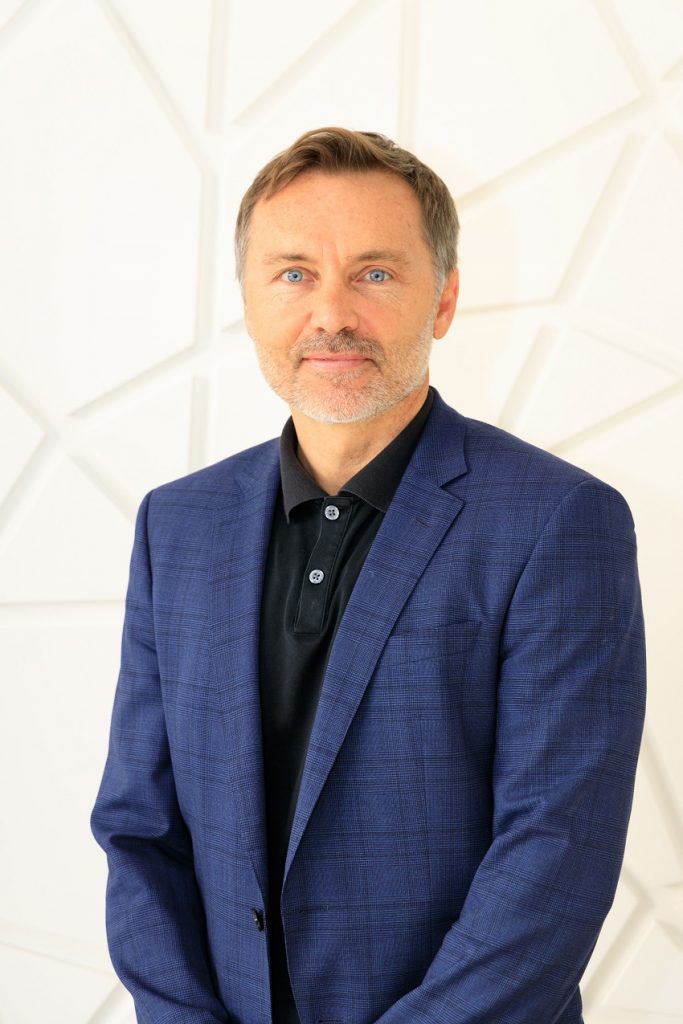
As the engines of economic growth, cities generate approximately 85% of the current global GDP – a number that will only swell further in the decades ahead. Cities of the future will therefore be places where people live, work, innovate, meet and consume considerable amounts of resources.
That’s why cities will play a pivotal part in the global pursuit of a clean energy and zero emissions future, rendering the current linear model of “produce, use, dispose” that is the characteristic of much of urban habitat, totally obsolete.
But making cities smart and sustainable means rethinking and integrating every element of urban living – whether it’s about supporting a circular economy, facilitating clean mobility, setting up the infrastructure for new energy or ensuring the community’s food security.
In the Gulf and the wider Middle East, the conversation around future cities that offer fully integrated, net-zero energy and vibrant communities with an eco-friendly lifestyle, has increasingly become more robust as the region prepares to host two watershed climate conferences – COP27 at Sharm El Sheikh in Egypt next month, and COP28 in the UAE next year.
Sustainability: Finding the perfect balance
As World Sustainability Day approaches, now is the time for a conversation on why the cities of the future must be sustainable and smart – on the perfect balance needed between economic and social development while preserving precious natural resources for future generations, through collaborative work between the private and public sectors.
As demonstrated by sustainable projects in the UAE such as Sharjah Sustainable City, this future must be built on the lessons of the past and anticipate the challenges of the future. A joint venture between the Sharjah Investment and Development Authority (Shurooq) and Diamond Developers, Sharjah Sustainable City represents a leap for future cities in the UAE, with villas powered by rooftop solar panels, a waste-to-energy biogas plant, electric shuttles for internal mobility and the facility to grow its own vegetables and greens through vertical farming.
As the first sustainable development in the emirate, Sharjah Sustainable City aims to create a net-zero community with a reduced carbon footprint and major savings on energy and water consumption. By combining the best of sustainable architecture and building materials, sustainable engineering and construction, low-carbon agricultural technologies, clean mobility and renewables, Sharjah Sustainable City has set a new benchmark for sustainable communities and is poised to drive the growth of the sector in the pursuit of a net zero journey.
The urgent need to invest in sustainable cities of the future can also be grasped from estimates by the World Economic Forum (WEF), which found that the world’s built environment contributes an estimated 40% of global carbon emissions, and it will take a staggering $5.2 trillion over the next decade alone to decarbonise it.
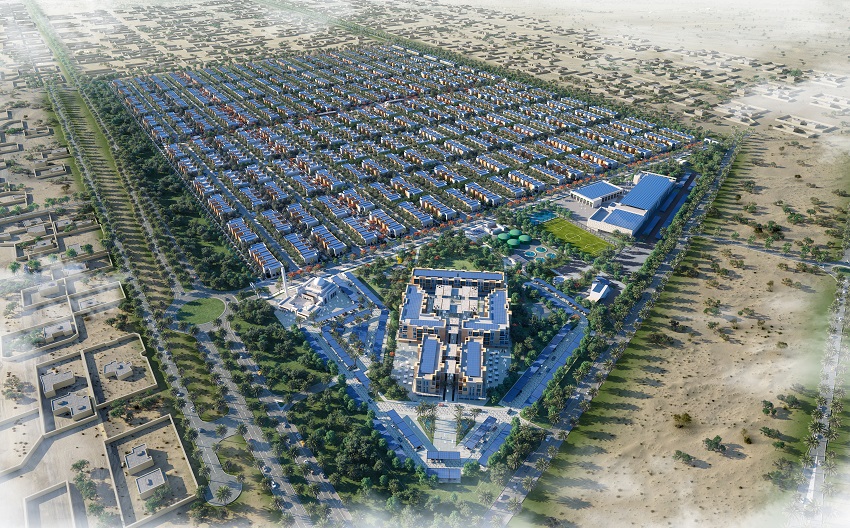
The growing momentum for sustainable cities is also not surprising from an investor’s perspective, with the WEF earlier this year estimating that green certifications yield a rent premium of 6% and a sales premium of 7.6% on average globally.
The global focus has therefore rightly moved to creating genuinely sustainable net-zero communities, providing real-life solutions related to food security, water and energy management, as well as natural resource conservation.
Championing net-zero in sustainable cities
The perception of urban habitats has matured from simply being about stunning views and soaring skyscrapers to championing net zero energy, creating sustainable mobility and food ecosystems, promoting health and wellbeing, and being resilient to climate change.
That’s exactly the concept that Sharjah Sustainable City has pioneered – a concept that has found growing adoption among other real estate developments since its inception. With sustainable real estate developments still remaining a niche concept in the UAE, Sharjah Sustainable City is only the third such project announced in the country – after Masdar City in Abu Dhabi, and The Sustainable City – Dubai.
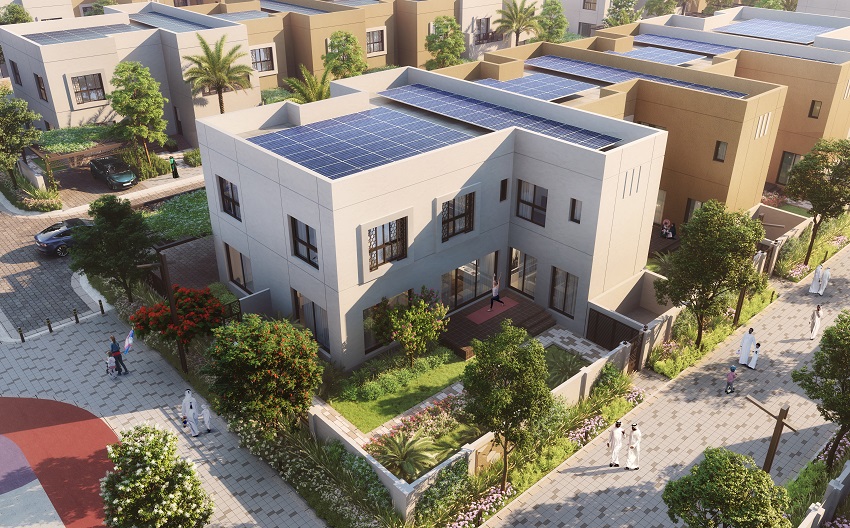
The interest in the project has been phenomenal – the first two phases have sold out and a third has seen increasing interest from prospective homeowners. That’s a testimony that stakeholders have been quick to grasp the economic advantages that sustainable communities can provide – buoyed by the realisation that the positive social and environmental impacts of projects like SSC are essential to the well-being of our future generations.
Conversations about smart and sustainable cities today are increasingly peppered with talks of ‘green premiums’ and ‘brown discount’, i.e., buildings that fail to live up to higher environmental standards and are seen as less valuable for the future. Projects such as Sharjah Sustainable City clearly demonstrate that it is well worth making an effort to join hands in building a sustainable environment for our future generations.
While there is a long way to go in the pursuit of future cities at scale, building a smart and sustainable habitat for the global population of tomorrow certainly needs the collective collaboration of the industry, the government and the entire supply chain today.
